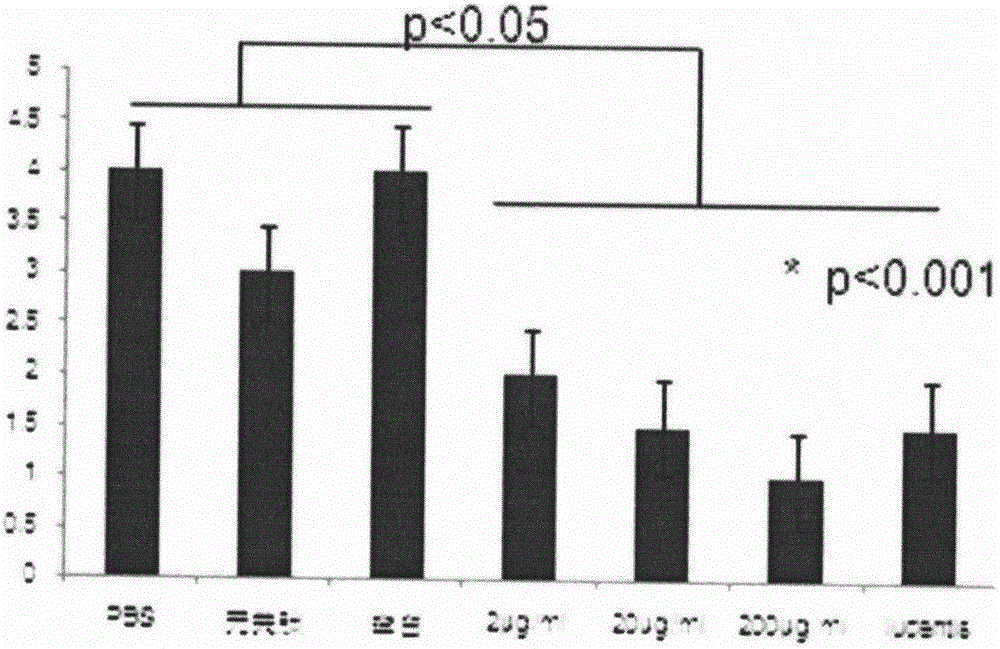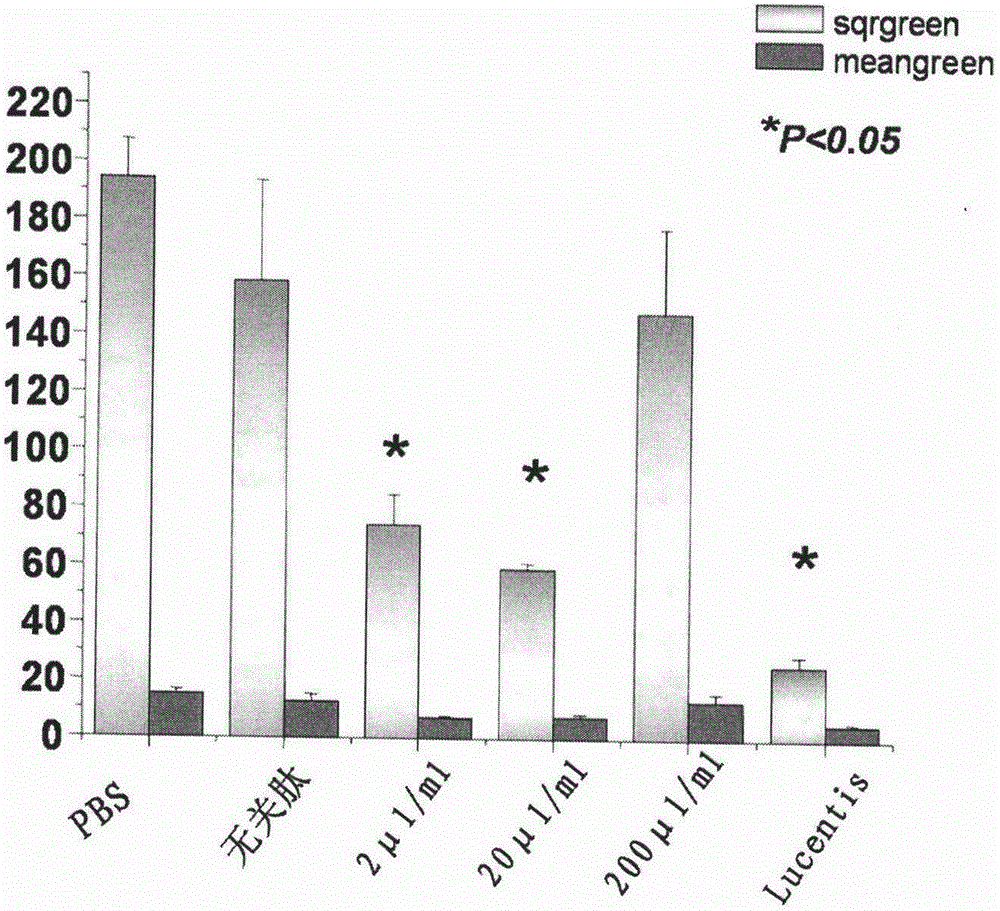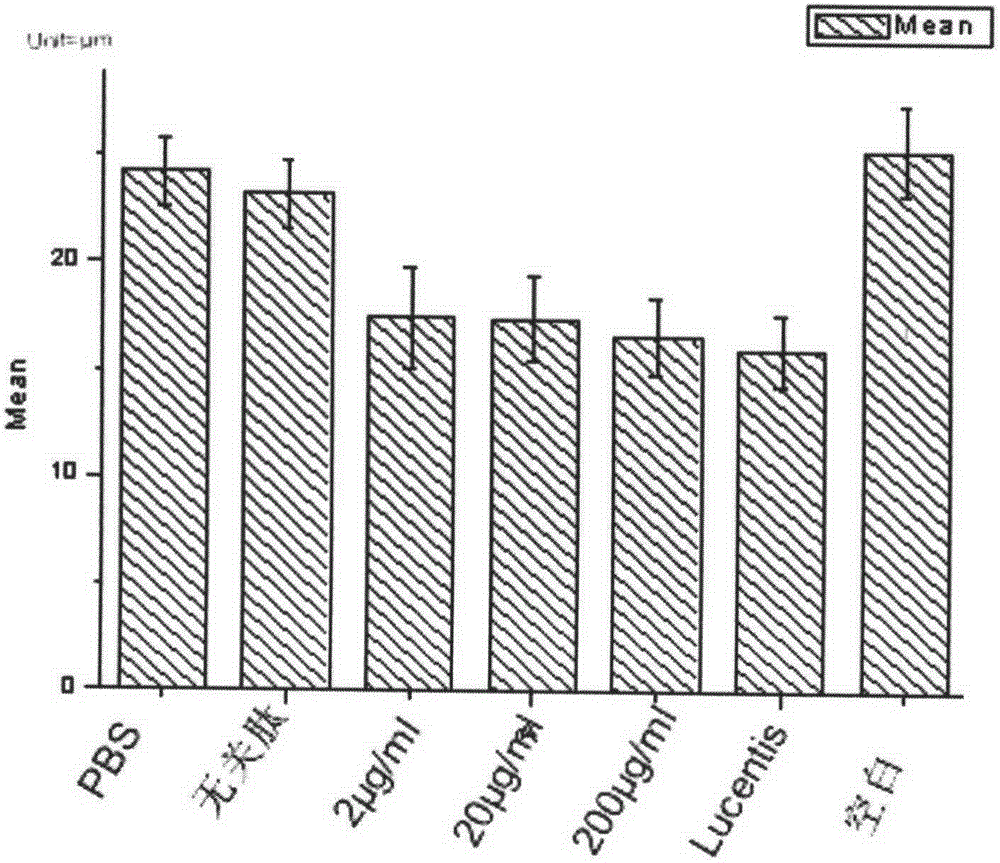Application of oligopeptide to preparation of medicine for treating angiogenesis ophthalmic diseases
A technology for angiogenesis and ophthalmic diseases, applied in the field of biomedicine, can solve problems such as high treatment costs and increased patient burden
- Summary
- Abstract
- Description
- Claims
- Application Information
AI Technical Summary
Problems solved by technology
Method used
Image
Examples
Embodiment 1
[0035] The preparation of embodiment 1 short peptide FpAT
[0036] Put the peptide synthesis column filled with 4-(2', 4'2-dimethoxyphenyl-Fmoc-aminomethyl)phenoxyacetamidoethyl resin in the PioneerTM peptide synthesizer according to the following sequence Peptide synthesis was performed under nitrogen:
[0037] 1) Solvate the resin in DMF for 5min;
[0038] 2) Treat the resin with 20% pipecolinic acid in DMF for about 15 minutes to remove the protecting group Fmoc on the resin grafted group (or on the resin-bound amino acid a-amino group);
[0039] 3) Wash the resin with DMF for about 20 minutes;
[0040] 4) Activate the α- Carboxyl;
[0041] 5) Coupling the activated amino acid obtained in step 4 with the resin (or resin-bound amino acid) of step 2 in DMF for about 30 min;
[0042] 6) washing the resin with DMF for 5 min;
[0043] 7) Repeat steps 2-6 with the following amino acids: Fmoc-Val, Fmoc-Gly, Fmoc-Gly, Fmoc-Gly, Fmoc-Glu(γ-0tBu), Fmoc-Ala, Fomc-Leu, Fomc-Phe...
Embodiment 2
[0047] Method or technology used in the experiment of embodiment 2
[0048] 1. Laser-induced CNV method:
[0049] 1% sodium pentobarbital (50mg / Kg) was injected intraperitoneally into BN rats; compound tropicamide eye drops were used to dilate the pupils; contact lenses (ocular three-way mirror) were placed in the eyes of the rats, and the rats were placed in the slit lamp by an assistant Before, use 532 frequency doubled laser (parameters: spot diameter 100μm, power 125mv, exposure time: 0.1s), photocoagulate 8 points in the vascular space 1-1.5PD away from the optic disc, bubbles will be generated after photocoagulation, accompanied by a small amount of bleeding ( or accompanied by a light sound) indicates that the Bruch's membrane has been broken, and it is judged as an effective laser spot.
[0050] 2. Fluorescence angiography (fluorescent angiography, FA): 5 to 7 days after the laser, routine intraperitoneal injection of anesthesia, mydriasis, intraperitoneal injection...
Embodiment 3
[0122] Pharmacodynamic evaluation of embodiment 3 logarithmic dose-effect relationship
[0123] 1. Fluorescence contrast analysis:
[0124] 12-14 days after intravitreal injection, fluorescein contrast examinations were performed in batches, and the pictures were recorded and saved for analysis.
[0125] FA display: blank control group, PBS (NaCl: 8.00g, KCl: 0.20g, NaCl 2 HPO 4 : 1.145g, KH 2 PO 4 : 0.20g, water: 1000ml; the same below) in the mid-term images of the group all showed strong fluorophores in the laser area, the borders were blurred and expanded, and even fused light groups appeared, and the late stage was strongly stained. The irrelevant peptide (randomly designed according to computer software, sequence: Met-Asp-Asp-Asp-Asn-Gly-Ser-Gly-Cys) group also presents a strong fluorophore, with blurred and enlarged boundaries, but the retinal capillary layer is not clear. The Lucentis (commercially available, purchased from Novartis) group showed irregular weak ...
PUM
 Login to View More
Login to View More Abstract
Description
Claims
Application Information
 Login to View More
Login to View More - R&D
- Intellectual Property
- Life Sciences
- Materials
- Tech Scout
- Unparalleled Data Quality
- Higher Quality Content
- 60% Fewer Hallucinations
Browse by: Latest US Patents, China's latest patents, Technical Efficacy Thesaurus, Application Domain, Technology Topic, Popular Technical Reports.
© 2025 PatSnap. All rights reserved.Legal|Privacy policy|Modern Slavery Act Transparency Statement|Sitemap|About US| Contact US: help@patsnap.com



